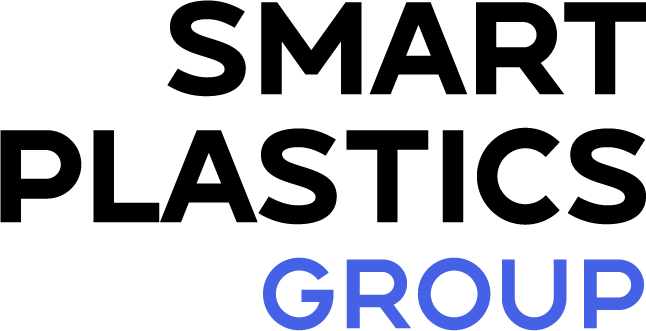!! Save the Date !! Tuesday 17th June @ 2:15 pm, CR204
The Smart Plastics Group – LIMATB , is very pleased to announce a special seminar, by Pr. Jaime GRUNLAN (Texas A&M), “Low Temperature Thermal Reduction of Graphene Oxide Nanobrick Walls: Unique Combination of High Gas Barrier/Separation and Low Resistivity in Fully Organic Polyelectrolyte Multilayer Thin Films”, followed by second seminar by Prof. Steve EICHHORN (Univ. of Exeter), “Sensing Stress in Single Phase Nanocomposites”.
Professor Steve Eichhorn, University of Exeter s.j.eichhorn@exeter.ac.uk
“Sensing Stress in Single Phase Nanocomposites”

This talk will focus on the use of Raman spectroscopy to sense local stress in single phase nanocomposites. Two systems will be explored; namely all-cellulose nanocomposites and carbon nanotube-carbon fibre hybrid composites. It will be shown that distinct Raman bands can be used to identify the matrix and reinforcing phases in an all-cellulose nancomposite comprising cellulose nanocrystals and a dissolved cellulose matrix. Moreover these bands can be used to discriminate local stress in the materials [1,2] and the orientation of the phases during processing [3] and deformation [4]. Single wall carbon nanotubes (SWNTs) have been coated on carbon fibres to sense local stress [5]. Previously it has been difficult to record the deformation micromechanics of low modulus carbon fibres due to the absence of peak located at ~2660 cm-1 – commonly known as the 2D peak. It is demonstrated that when SWNTs are present the local point-to-point stress distribution in a model epoxy matrix-fibre composite can be mapped [5]. Furthermore the interfacial shear stress for a high modulus carbon fibre-based model composite doubles with the presence of SWNTs at the interface. Fragmentation events in both systems can be recorded demonstrating the sensing capability of this approach during complex deformation events [6].
Low Temperature Thermal Reduction of Graphene Oxide Nanobrick Walls: Unique Combination of High Gas Barrier/Separation and Low Resistivity in Fully Organic Polyelectrolyte Multilayer Thin Films

In many cases, electronics packaging requires electrical conductivity and barrier to oxygen, even under humid conditions. Layer-by-layer assembly from aqueous solutions was used to construct multilayer thin films (< 200 nm) comprised of polyethyleneimine (PEI) and graphene oxide (GO). Low temperature (175 ºC) thermal reduction of these films improved gas barrier properties (e.g., lower permeability than SiOx), even under high humidity conditions, and also enhanced their electrical conductivity to 1750 S/m. The flexible nature of the aforementioned thin films, along with their excellent combination of transport properties, make them ideal candidates for use in a broad range of electronics and packaging applications. It was also discovered that GO-PEI multilayer thin films are capable of separating hydrogen from oxygen. Part of this work was featured on the cover of Advanced Materials in January 2013.
The Speaker
Dr. Jaime Grunlan joined Texas A&M University as an Assistant Professor of Mechanical Engineering in July of 2004, after spending three years at the Avery Research Center in Pasadena, CA as a Senior Research Engineer. He obtained a B.S. in Chemistry, with a Polymers & Coatings emphasis, from North Dakota State University and a Ph.D. from the University of Minnesota in Materials Science and Engineering. Prof. Grunlan was promoted to Associate Professor in September 2010 and more recently appointed the Gulf Oil/Thomas A. Dietz Career Development Professor I. He won the NSF CAREER and 3M Untenured Faculty awards in 2007, the Dow 2009 Young Faculty Award, the 2010 Carl A. Dahlquist Award, and the 2012 L.E. Scriven Young Investigator Award, sponsored by the ISCST, for his work in these areas. Dr. Grunlan also holds joint appointments in Chemistry and Materials Science and Engineering.
[1] Pullawan, T., Wilkinson, A.N., Eichhorn, S.J. 2010. Discrimination of Matrix-Fibre Interactions in All-Cellulose Nanocomposites. Composites Science and Technology, 70, 2325-2330. [2] Pullawan, T., Wilkinson, A.N., Zhang, L.N., Eichhorn, S.J. 2014. Deformation Micromechanics of All-Cellulose Nanocomposites: Comparing Matrix and Reinforcing Components. Carbohydrate Polymers, 100, 31-39. [3] Pullawan, T., Wilkinson, A.N., Eichhorn, S.J. 2012. Influence of Magnetic Field Alignment of Cellulose Whiskers on the Mechanics of All-Cellulose Nanocomposites. Biomacromolecules, 13, 2528-2536. [4] Pullawan, T., Wilkinson, A.N., Eichhorn, S.J. 2013. Orientation and Deformation of Wet-Stretched All-Cellulose Nanocomposites. Journal of Materials Science, 48, 7847-7855. [5] Jin, S.-Y., Young, R.J., Eichhorn, S.J. 2014. Hybrid Carbon Fibre – Carbon Nanotube Composite Interfaces. Composites Science & Technology, 95, 114-120. [6] Jin, S.-Y., Young, R.J., Eichhorn, S.J. 2014. Controlling and Mapping Interfacial Stress Transfer in Fragmented Model Carbon Fibre Composites. Composites Science and Technology – in press.
